
kscarbel2
-
Posts
17,806 -
Joined
-
Days Won
85
Content Type
Profiles
Forums
Gallery
Events
Blogs
BMT Wiki
Collections
Store
Posts posted by kscarbel2
-
-
Hyundai Group Press Release / July 6, 2020
Hyundai Motor is shipping the first 10 units of XCIENT Fuel Cell, the world’s first fuel cell heavy-duty truck, to Switzerland
• Hyundai will roll out 50 trucks this year and total of 1,600 units by 2025
• Powered by 190-kW hydrogen fuel cell system, XCIENT Fuel Cell can travel approximately 400 km on a single charge
• Developed independently by Hyundai Motor, XCIENT Fuel Cell will help decarbonize the world
• Hyundai to develop tractor unit with driving range of 1,000 kilometers on a single chargeSEOUL – Hyundai Motor Company today shipped the first 10 units of the Hyundai XCIENT Fuel Cell, the world’s first mass-produced fuel cell heavy-duty truck, to Switzerland. The company plans to ship a total of 50 XCIENT Fuel Cells to Switzerland this year, with handover to commercial fleet customers starting in September. Hyundai plans to roll out a total of 1,600 XCIENT Fuel Cell trucks by 2025, reflecting the company’s environmental commitment and technological prowess as it works toward reducing carbon emissions through zero-emission solutions.
“XCIENT Fuel Cell is a present-day reality, not as a mere future drawing board project. By putting this groundbreaking vehicle on the road now, Hyundai marks a significant milestone in the history of commercial vehicles and the development of hydrogen society,” said In Cheol Lee, Executive Vice President and Head of Commercial Vehicle Division at Hyundai Motor. “Building a comprehensive hydrogen ecosystem, where critical transportation needs are met by vehicles like XCIENT Fuel Cell, will lead to a paradigm shift that removes automobile emissions from the environmental equation.”
“Having introduced the world’s first mass-produced fuel-cell electric passenger vehicle, the ix35, and the second-generation fuel cell electric vehicle, the NEXO, Hyundai is now leveraging decades of experience, world-leading fuel-cell technology, and mass-production capability to advance hydrogen in the commercial vehicle sector with the XCIENT Fuel Cell,” he added.
XCIENT Fuel Cell
XCIENT is powered by a 190-kW hydrogen fuel cell system with dual 95-kW fuel cell stacks. Seven large hydrogen tanks offer a combined storage capacity of around 32.09 kg of hydrogen. The driving range per charge for XCIENT Fuel Cell is about 400km*, which was developed with an optimal balance between the specific requirements from the potential commercial fleet customers and the charging infrastructure in Switzerland. Refueling time for each truck takes approximately 8~20 minutes.
Fuel cell technology is particularly well-suited to commercial shipping and logistics due to long ranges and short refueling times. The dual-mounted fuel cell system provides enough energy to drive the heavy-duty trucks up and down the mountainous terrain in the region.
Hyundai Motor is developing a long-distance tractor unit capable of traveling 1,000 kilometers on a single charge equipped with an enhanced fuel cell system with high durability and power, aimed at global markets including North America and Europe.
Green Hydrogen Ecosystem
In 2019, Hyundai Motor Company formed Hyundai Hydrogen Mobility (HHM), a joint venture with Swiss company H2 Energy, which will lease the trucks to commercial truck operators on a pay-per-use basis, meaning there is no initial investment for the commercial fleet customers.
Hyundai chose Switzerland as the starting point for its business venture for various reasons. One of the reasons is the Swiss LSVA road tax on commercial vehicles, which does not apply for zero-emission trucks. That nearly equalizes the hauling costs per kilometer of the fuel cell truck compared to a regular diesel truck.
Hyundai’s business case involves using purely clean hydrogen generated from hydropower. To truly reduce carbon emissions, all of the trucks need to run on only green hydrogen. Switzerland is the country with one of the highest shares of hydropower globally, and can therefore deliver sufficient green energy for the production of hydrogen. Once the project is underway in Switzerland, Hyundai plans to expand it to other European countries as well.
Hyundai Hydrogen Leadership
As Hyundai looks to the future, zero-emissions mobility will play a significant role in the company’s strategy. In addition to the XCIENT Fuel Cell trucks, Hyundai is also the manufacturer of NEXO, its second-generation hydrogen-powered SUV. By 2025, the company aims to sell 670,000 electric vehicles annually, including 110,000 FCEVs.
In December 2018, Hyundai Motor Group announced its long-term roadmap, “Fuel Cell Vision 2030”, and reaffirmed its commitment to accelerate the development of a hydrogen society by leveraging its global leadership in fuel cell technologies. As part of this plan, Hyundai Motor Group aims to secure a 700,000-unit-a-year capacity of fuel cell systems for automobiles as well as vessels, rail cars, drones and power generators by 2030.
* Driving distance range around 400km in the 4x2 truck with refrigerated upfit configuration while operating 34 tonne truck + trailer combination
.
-
A German-controlled American truckmaker cooperating with a Chinese Communist Party-led autonomous truck company........what could possible go wrong?
-
 2
2
-
-
Nick Carey, Reuters / July 15, 2020
Truck maker Navistar International Corp. has bought a minority stake in TuSimple [Beijing TuSimple Future Technology Co., ltd.] and aims to co-develop self-driving trucks by 2024 with the technology company as it rolls out a national U.S. autonomous freight network, the two companies said Wednesday.
Self-driving technology for freight trucks has attracted investor attention as it should be easier and cheaper to roll out than in self-driving cars and autonomous taxis, while providing a clearer path to profitability.
Unlike self-driving cars and robotaxis, self-driving freight services run on fixed routes between predefined points -- almost all of that on major highways with no intersections or pedestrians. That business is more predictable and requires less mapping than driving customers between random points.
Navistar and TuSimple did not disclose the size of the stake. TuSimple recently announced it was launching a self-driving truck network with United Parcel Service Inc., trucking firm US Xpress Enterprises Inc., and McLane, a supply chain unit of Berkshire Hathaway Inc.
Navistar CEO Persio Lisboa, who said the truck maker chose TuSimple because its software was more developed than its competitors' and because of its relations with customers, said the minority stake could "turn into something bigger as we go to the next phase of development."
TuSimple's president, Cheng Lu, said because its network runs using points on a fixed network -- which he likens to a railroad -- the trucks the company will co-develop with Navistar will operate at Level 4 autonomy where vehicles can operate without a driver under set conditions.
Self-driving car developers are aiming for Level 5, or full autonomy, which will require far greater investments of money, time and research to develop.
"You don't need to over-engineer this," Lu said. "Trucking is always about taking freight from point to point on predefined routes and this is where we can add value by addressing pain points in the industry."
In addition to running tests on TuSimple's network, UPS also owns a stake in the company.
"This is the type of developmental production partnership we are excited to view in this market," Philip Aiello, the director of UPS's advanced technology group, said of the partnership between Navistar and TuSimple.
The two companies have worked together since 2018 and Navistar CEO Lisboa said much of what needs to be done by 2024 consists of testing technology the truck maker has already developed on TuSimple's network.
In January, Volkswagen Group's truck unit, Traton , offered $35 a share, or $2.9 billion, for the Navistar shares it does not already own.
Lisboa declined to comment on buyout talks, but said as Traton has two seats on Navistar's board, it is well aware of the move to work with and invest in TuSimple.
.
-
.
-
6 hours ago, Straydog954 said:
Hello all. Blew a grease seal on trunnion shaft at base of trunnion due to frozen relief valve on cap. I assume this is an expensive repair. Can anyone comment on this?
44 rear? 88AX449 seal. Not expensive.
-
https://en.wikipedia.org/wiki/1967_USS_Forrestal_fire
On 29 July 1967, a fire broke out on board the aircraft carrier USS Forrestal after an electrical anomaly caused a Zuni rocket on a F-4B Phantom to fire, striking an external fuel tank of an A-4 Skyhawk. The flammable jet fuel spilled across the flight deck, ignited, and triggered a chain-reaction of explosions that killed 134 sailors and injured 161. The disaster prompted the Navy to revise its fire fighting practices. It also modified its weapon handling procedures and installed a deck wash down system on all carriers. The newly established Farrier Fire Fighting School Learning Site in Norfolk, Virginia was named after Chief Gerald W. Farrier, the commander of Damage Control Team 8, who was among the first to die in the fire and explosions.
Unstable ordnance received
On 28 July, the day before the accident, Forrestal was resupplied with ordnance by the ammunition ship USS Diamond Head. The load included sixteen 1,000 lb AN/M65A1 "fat boy" bombs (so nicknamed because of their short, rotund shape), which Diamond Head had picked up from Subic Bay Naval Base and were intended for the next day's second bombing sortie. Some of the batch of AN-M65A1s Forrestal received were more than a decade old, having spent a portion of that exposed to the heat and humidity of Okinawa or Guam,[10] eventually being improperly stored in open-air Quonset huts at a disused ammunition dump on the periphery of Subic Bay Naval Base. Unlike the thick-cased Mark 83 bombs filled with Composition H6, the AN/M65A1 bombs were thin-skinned and filled with Composition B, an older explosive with greater shock and heat sensitivity.
Unstable bombs stored on deck
With orders to conduct strike missions over North Vietnam the next day, and with no replacement bombs available, Captain Beling reluctantly concluded that he had no choice but to accept the AN-M65A1 bombs in their current condition.[8][14][15] In one concession to the demands of the ordnance handlers, Beling agreed to store all 16 bombs alone on deck in the "bomb farm" area between the starboard rail and the carrier's island until they were loaded for the next day's missions. Standard procedure was to store them in the ship's magazine with the rest of the air wing's ordnance; had they been stored as standard, an accidental detonation could easily have destroyed the ship.
Incorrect NASA report
A 1995 report, NASA Reference Publication 1374, incorrectly described the Forrestal fire as a result of electromagnetic interference. It states, "a Navy jet landing on the aircraft carrier U.S.S. Forrestal experienced the uncommanded release of munitions that struck a fully armed and fueled fighter on deck... This accident was caused by the landing aircraft being illuminated by carrier based radar, and the resulting EMI sent an unwanted signal to the weapons system."[
-
10 minutes ago, Ditchdiggerjcf said:
Complete and utter horsesh*t put forth by someone who doesn't know sh*t, or has an agenda.
The zuni rocket, the rocket the caused the forrestal fire, didn't enter production until the mid 50's. They were not leftover from WW2. That is a lie.
The long and the short of that is that was an equipment malfunction.
Um, first of all, are you capable of having a conversation without using vulgar language like sh*t ?
Second, what I wrote is what I was told by a Navy fire training instructor from Pensacola. I didn't have any reason not to believe him, nor did I get the impression that he had "an agenda". I don't have an agenda either.
That all said, I do recall the news reported a Zuni missile, a type alleged to be problematic, malfunctioned.
-
2 hours ago, Hook n ladder 1 said:
Would a 3.79 and 13 speed [overdrive?] fuller be a decent setup for local dump work? Or would the ratio be too numerically low? The other choice would be a 3.98.
Thanks in advance.
No, absolutely not.
-
.
.
.
-
The original Bronco was not an icon........then.
It "became" an icon.......over time.
Fortunately, Ford corporate not only acknowledges this, but also sees the vast potential to profit from it.
-
The event reminds me of the horrible Forrestal Fire.
The US Navy, in the midst of a massive bombing campaign, was running low on munitions. A decision was made to use munitions of WW2 vintage that had been stored for years in Quonset huts in the Philippines. Unstable from the incorrect storage conditions, they caused the Forrestal fire,
.
.
-
12 hours ago, 41chevy said:
USS San Diego Heavy Cruiser was sunk in WWI on December 11 1918 only 8 miles of Fire Island L.I.N.Y by German Uboat U156 who laid mines along the south shore of .L.I.
The Eagle 56 was the last U.S. warship sunk in the war with Germany, the same Uboat sunk a freighter off Cape Cod the next day. The subs captain was disobeying his orders given by Admiral Dornitz to surrender his boat 6 days prior. His Uboat was sunk off Block Island after it was depth charged for 22 hours by ships and dirigibles
The 60 Eagle class boats were build by Ford in 1918 on an assembly line.
https://www.bigmacktrucks.com/topic/51714-navy-news/?tab=comments#comment-428294
-
Ford aims for off-road success with 2021 Bronco, Bronco Sport
Michael Martinez, Automotive News / July 13, 2020
DETROIT — Ford Motor Co., resurrecting a historically popular nameplate with modern amenities such as a trail-mapping system and 360-degree camera views, aims to attract a new generation of overlanding enthusiasts with the first members of the Bronco family of off-roaders.
The 2021 Bronco SUV and Bronco Sport crossover signify a new direction for the automaker as it aims to wrest back a slice of the market long ago ceded to rivals -- particularly Jeep. Under CEO Jim Hackett, Ford is pruning its lineup to focus on more profitable vehicles that elicit more emotion and passion from customers.
It expects the pair of rugged utilities — unveiled Monday directly into the living rooms of would-be buyers via primetime introductions on ESPN, National Geographic and ABC — to do just that.
Under development for the past half-decade and arriving nearly 25 years after the last Bronco departed, the sixth-generation SUV will serve as the flagship for a new off-road subbrand. It will be built on the same platform as the Ford Ranger midsize pickup, come in two-door and four-door variants and offer tires as big as 35 inches. Its modular chassis — featuring removable doors and roof panels — lends itself to customization, allowing dealers to generate additional profit through a redesigned and expanded accessories business.
It goes on sale next spring, Ford said, priced from $29,995, including shipping, for the base two-door Bronco.
The unibody Bronco Sport, which shares a platform with the Ford Escape and Lincoln Corsair compact crossovers, is meant for customers who may not want as extreme an adventure, but it will nonetheless offer four-wheel-drive capability and a slew of off-road features.
"Bronco has always been about adaptability," said Mark Grueber, Ford's consumer marketing manager for the Bronco. "Our family of Broncos is designed to provide ideal choices to meet all of our customers' needs better than we have before."
The unveiling, which was delayed by three months and converted into a virtual event because of the coronavirus pandemic, marked the culmination of more than three years of teasing and hype-building since Ford confirmed the Bronco's revival at the 2017 Detroit auto show.
Bronco specs
The Bronco comes standard with a 2.3-liter four-cylinder EcoBoost engine that's expected to generate 270 hp and best-in-class 310 pound-feet of torque. Ford also has used that engine in vehicles such as the Ranger, Focus RS and Mustang.
Buyers can upgrade to a 2.7-liter V-6, which Ford has been testing in a Bronco R race prototype, that's expected to generate a best-in-class 310 hp and 400 pound-feet of torque.
A 10-speed automatic transmission is standard, while a seven-speed manual is optional.
The Bronco will come with two 4x4 systems: a base system with a two-speed electronic transfer case and an optional advanced system with a two-speed electromechanical transfer case, a Dana solid rear axle and an independent front differential unit. Its maximum ground clearance is a best-in-class 11.6 inches, Ford said.
In a nod to its past, the new Bronco comes with seven G.O.A.T. (goes over any type of terrain) modes: Normal, Eco, Sport, Slippery and Sand, Baja, Mud/Ruts, and Rock Crawl. The first-generation Bronco was nicknamed G.O.A.T. by Donald Frey, who was a Ford executive when it debuted in 1966.
Additional features
The SUV offers a number of features meant to appeal to off-road enthusiasts. It has rubberized flooring with drains and optional plugs, allowing users to simply hose it down to clean away dirt, mud or sand. Switches on the instrument panel are made with silicone rubber parts that can get wet.
Optional marine-grade vinyl seats are water-resistant and mold-resistant, which Ford says is an industry first.
The interior also includes a number of hand grips, emblazoned with the Bronco name, to hold onto for stability while riding off-road.
"Trail sights" — raised black bars on the hood — can help navigate uneven terrain and double as tie-downs for canoes or other items stored on the roof.
The back has a side-swinging gate with a built-in bottle opener and a slide-out tailgate.
On four-door models, the removable doors can be placed in protective bags and stored in the back — an advantage it's trying to build over the rival Jeep Wrangler.
The roof also is removable, in three sections on the two-door model and four on the four-door version. The vehicle was designed to have an "open-air" roof, without the traditional crossbar found between the front and rear seats.
The four-door Bronco has a standard cloth soft top, while hard-top options exist for both the two-door and four-door versions. A Sasquatch off-road package includes 35-inch tires, 17-inch wheels and other features.
Ford plans to offer 200 accessories when the vehicle launches next year.
"There's no such thing as a standard Bronco because every Bronco is now different," chief designer Paul Wraith said. "With one hour and a wrench, you can strip this truck almost down to its bare bones and replace or upgrade different components."
Trail-mapping system
The Bronco will get Ford's next-generation Sync 4 infotainment system, which can be updated over the air and also will be available on the upcoming F-150 pickup and Mustang Mach-E electric crossover. The Bronco comes with either a standard 8-inch or optional 12-inch center screen and an LCD instrument cluster. A 360-degree camera system can provide "spotter views" for additional visibility when drivers crawl over rocks and other difficult terrain, Ford said.
A trail-mapping system will let users track and share their off-road experience.
"It works online or off on either of the navigation-capable 8- or 12-inch Sync systems," Grueber said, "allowing users to select one of hundreds of available curated trail maps to map out and then track, capture and share their adventures with others."
The vehicle will come in five trims above the base model: Big Bend, Black Diamond, Outer Banks, Wildtrack and Badlands. Ford also will offer 3,500 First Edition units.
Officials said the Bronco would arrive at dealerships next spring. The company did not provide any information on price beyond the $29,995 minimum.
Bronco Sport
For months before the official name was revealed, the Bronco Sport was unofficially known as the "baby Bronco."
The crossover will be smaller than its off-road sibling, but Ford says it's still plenty capable. In fact, developers based the design on the 2004 Bronco SUV concept.
"The guys who love the Bronco Sport also love the Bronco — it's just too much for them," Wraith said.
Officials say the Bronco Sport will target competitors including the Jeep Compass and Honda CR-V. As with the Bronco, Ford designed the Bronco Sport to be highly customizable, planning more than 100 accessories when it launches this year.
"Every inch of it was designed and engineered with weekend adventurers in mind," said Hau Thai-Tang, Ford's product development and purchasing boss.
The Bronco Sport, on sale later this year, will be powered by a standard 1.5-liter EcoBoost engine that gets 181 hp and 190 pound-feet of torque. There's an optional 2.0-liter EcoBoost engine that gets 250 hp and 277 pound-feet of torque.
Both engines are paired with an eight-speed automatic transmission.
The Bronco Sport will come in base, Big Bend, Outer Banks and Badlands trims. Ford also will make 2,000 First Editions. Pricing was not available.
Bronco Sport specs
Developers took special care to differentiate the Bronco Sport from the vehicles with which it shares a platform.
"Bronco Sport is not an Escape with big tires," said Mark Aguirre, chief program engineer.
The vehicle's wheelbase, ground clearance and independent front and rear suspensions are unique. Ford tested the vehicle in Borrego Springs, Calif., the same location where it hosted the media drive for the original Ford F-150 Raptor.
It comes with 4wd and has a number of drive modes, similar to the Bronco: Normal, Eco, Sport, and Slippery and Sand, with additional Mud/Ruts and Rock Crawl modes on Badlands and First Edition models.
The interior comes with a number of features catering to active customers, including a safari-style roof that's higher in the back to accommodate two standing mountain bikes. The Big Bend trim comes with straps on the seat backs, similar to hiking backpacks, for storing items such as water bottles.
Both the Bronco and Bronco Sport will offer an off-road cruise control feature that works at up to 20 mph driving forward and 6 mph in reverse along trails.
The rear of the Bronco Sport comes with liftgate LED floodlamps meant to make storing cargo at night easier. A five-way folding cargo management system can double as a shelf or a slide-out working table. It also comes with a flip-glass rear window.
Like the bigger Bronco, the Badlands and First Edition versions of the Bronco Sport come with washable rubber flooring throughout the cabin and cargo area, along with silicone rubber switches.
The Bronco Sport will not come with Sync 4. It will be equipped with the current Sync 3 system, featuring an 8-inch touch screen.
Sales plans
Ford has big plans for its Bronco family of vehicles. Before the coronavirus hit, executives told dealers it expected to sell 200,000 vehicles in 2021. Officials said they expect to sell more four-door Broncos than two-doors.
Grueber said the pandemic hasn't changed the company's plans.
"The customer for Bronco and Bronco Sport is a bit different than the mass market," he said. "Interest is still extremely strong."
And that family is set to expand. Ford plans a Bronco-based pickup in 2024. Hackett said in 2019 that Ford would offer a hybrid version of the Bronco, but officials wouldn't confirm specific plans.
The Bronco will enter a midsize SUV segment stung by the coronavirus pandemic but still dominated by Jeep, which enjoys some of the industry's most loyal owners. U.S. sales in the segment are down 23 percent so far this year. The Jeep Wrangler, which set a sales record of 240,032 in 2018, leads with more than 96,000 vehicles sold in the first half of 2020, down 18 percent from a year earlier.
The compact crossover segment in which the Bronco Sport will compete declined 23 percent in the first six months of 2020. It's led by the Toyota RAV4.
Photo gallery - https://www.autonews.com/cars-concepts/ford-aims-road-success-2021-bronco-bronco-sport
.
-
It is NOT the mandate of states to become involved in the commercial truck industry.
-
 1
1
-
-
David Shepardson, Reuters / July 14, 2020
WASHINGTON -- A group of 15 U.S. states and the District of Columbia on Tuesday unveiled a joint memorandum of understanding aimed at boosting the market for electric medium- and heavy-duty vehicles and phasing out diesel-powered trucks by 2050.
The announcement comes weeks after the California Air Resources Board approved a groundbreaking policy to require manufacturers to sell a rising number of zero-emission vehicles, starting in 2024 and to electrify nearly all larger trucks by 2045.
The 14 states said the voluntary initiative is aimed at boosting the number of electric large pickup trucks and vans, delivery trucks, box trucks, school and transit buses, and long-haul delivery trucks, with the goal of ensuring all new medium- and heavy-duty vehicle sales be zero emission vehicles by 2050 with a target of 30 percent ZEV sales by 2030.
The states include California, Colorado, Connecticut, Massachusetts, Hawaii, New Jersey, New York, North Carolina, Oregon, Pennsylvania, Washington and Vermont.
The states committed to developing a plan within six months to identify barriers and propose solutions to support widespread electrification, including potential financial incentives and ways to boost EV infrastructure. Trucks and buses represent 4 percent of U.S. vehicles, but account for nearly 25 percent of greenhouse gas emissions from the transportation sector.
California's mandate will put an estimated 300,000 zero-emission trucks on the road by 2035. California's planned rules will initially require 5-9 percent ZEVs based on class, rising to 30-50 percent by 2030 and nearly all by 2045.
The push comes as a rising number of companies -- including Rivian, Tesla Inc., Nikola Corp. and General Motors -- work to introduce zero emission trucks.
Major businesses like Amazon.com, UPS and Walmart have also said they are ramping up purchases of electric delivery trucks.
California later plans to adopt new limits on nitrogen oxide emissions, one of the major precursors of smog, as well as require large fleet owners to buy some ZEVs.
-
-
2021 Ford Bronco Gets a Manual Transmission
Dave Vanderwerp, Car & Driver / July 14, 2020
The Bronco's Getrag seven-speed stick-shift is the only manual in Ford's U.S. lineup that's not found in a Mustang.
Any new manual transmission is a rarity these days, and that the new Bronco includes this celebration-worthy bit makes us even more enthused about this SUV's revival.
The Bronco's seven-speed manual is a [German] Getrag unit, part of the company's new family of six- and seven-speed longitudinal manuals that it calls MTI550. The 550 stands for its torque capacity in newton-meters, which equates to 406 lb-ft. The turbocharged 2.3-liter inline four-cylinder, the only engine available with the manual, is comfortably under that, with a peak of 310 lb-ft and 270 horsepower.
Ford calls this new seven-speed transmission MT88, and it's an entirely new architecture, not based on the Getrag MT82 six-speed that's in today's Mustang. That's a good thing, as shift-quality issues with the Mustang's manual have led to a class-action lawsuit.
The Bronco's manual becomes only the third available across Ford's lineup in the U.S., the other two both being in Mustangs: the previously mentioned six-speed, and the Shelby GT350's [Mexican] Tremec six-speed.
Ford insists on referring to this new manual's first gear as a creeper gear, going so far as to label it with a C on the shift knob and putting it in a dogleg position down and to the left, below reverse. However, the overall gearing in low range once the Bronco's larger tires and the Wrangler's shorter low-range ratio are factored are similar.
The Bronco's 6.588:1 first gear, paired with the shorter 3.06:1 low gear of the optional two-speed transfer case and the shortest 4.70:1 rear axle, means first gear is good for up to 7 mph in low range, same as the Wrangler. In high range, it will take you to 21 mph, versus 29 mph for the Wrangler, so it doesn't seem out of the question to use it in regular driving. We'll see if it's more advantageous to use it to extract the best acceleration runs once we get one to test. In its 0.646:1 top gear, the Bronco will cruise along at 80 mph at roughly 2400 rpm, about 150 rpm lower than the Wrangler.
While we await the chance to flick the Bronco's new transmission through its seven gears, let's just laud the fact that there's a new manual on the market.
.
-
At 8:01pm tonight, you could hear a pin drop at FCA headquarters. The Jeep brand has nothing to directly compete with this.
Bill Ford is a very pleased and proud man tonight. Ford has a major all-new sales channel.
I believe the Bronco will do wonders for reviving Ford's share price.
-
.
.
.
.
-
-
Pfizer and BioNTech receive permission from the U.S. Food and Drug Administration (FDA) to "fast-track" two vaccine candidates.
Two of Pfizer and BioNTech’s four investigational mRNA-based vaccine candidates received fast track designation from the FDA.
he designation was granted based on preliminary data from phase 1/2 studies that are currently ongoing in the U.S. and Germany as well as animal studies.
The companies said a large, global Phase 2b/3 study may begin as early as this month.
-
International Trucks Press Release / July 13, 2020
If you’re not comfortable in your truck, you’re not comfortable on the road. That's why we've improved our door seals and redesigned the windows to reduce wind noise for a quieter cab. #DriverFirst
.
-
-
Associated Press / July 12, 2020
Seventeen sailors and four civilians suffered minor injuries in an explosion and fire Sunday on board the USS Bonhomme Richard at its home port of Naval Base San Diego.
The 3-alarm blaze was reported shortly before 9 a.m.
The ship could burn for days “down to the water line” says San Diego Fire Chief Colin Stowell.
..
.


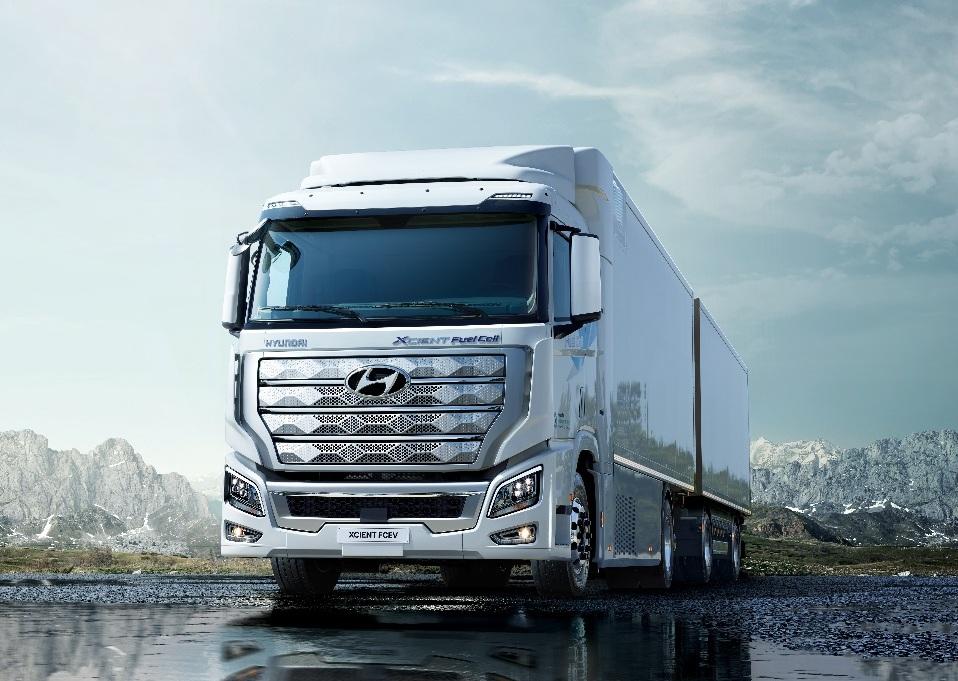
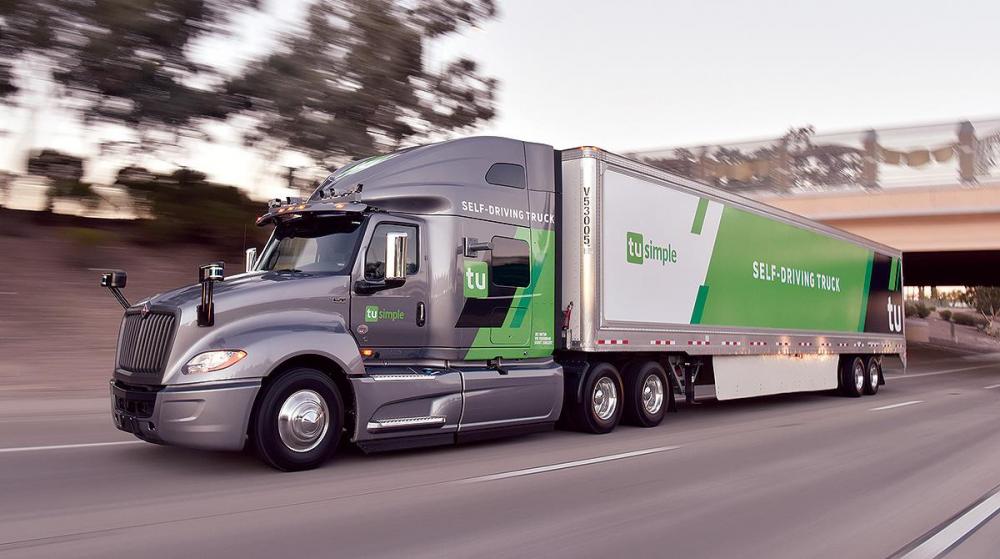
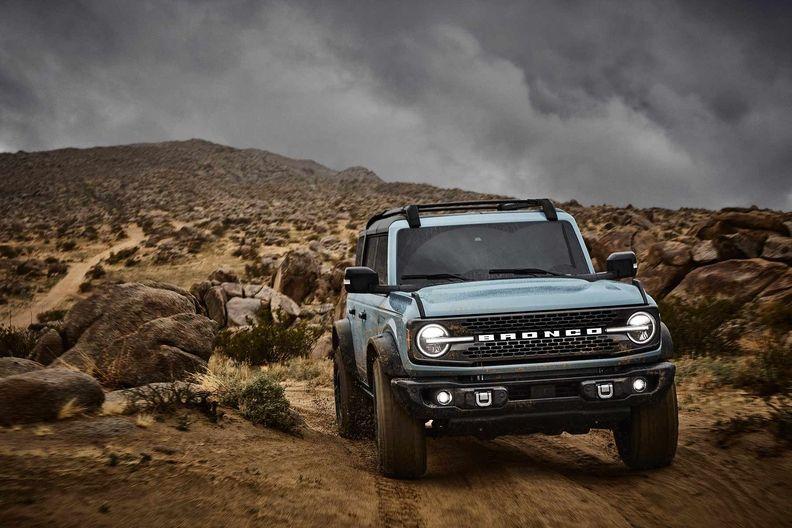
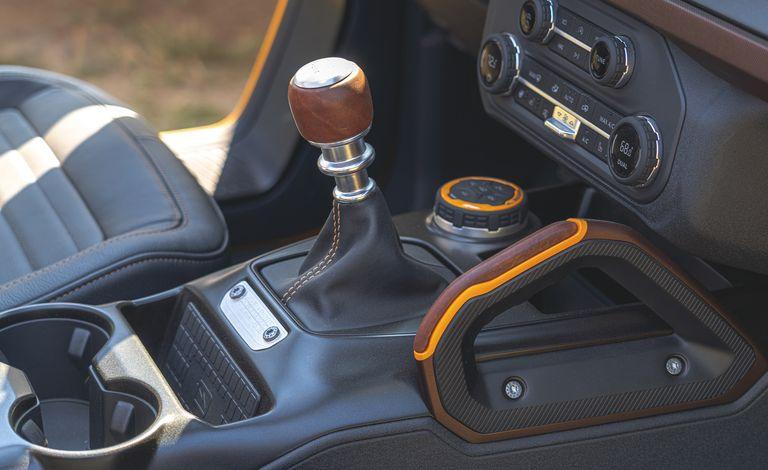
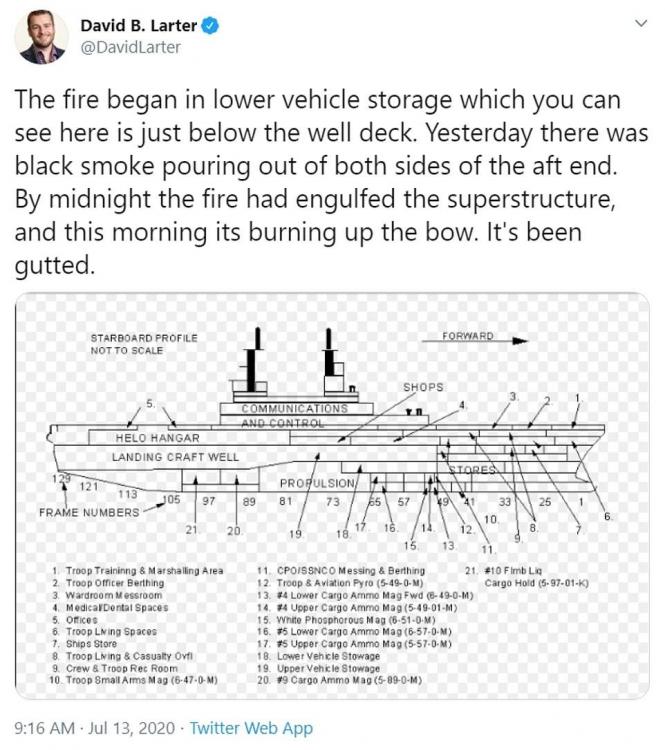
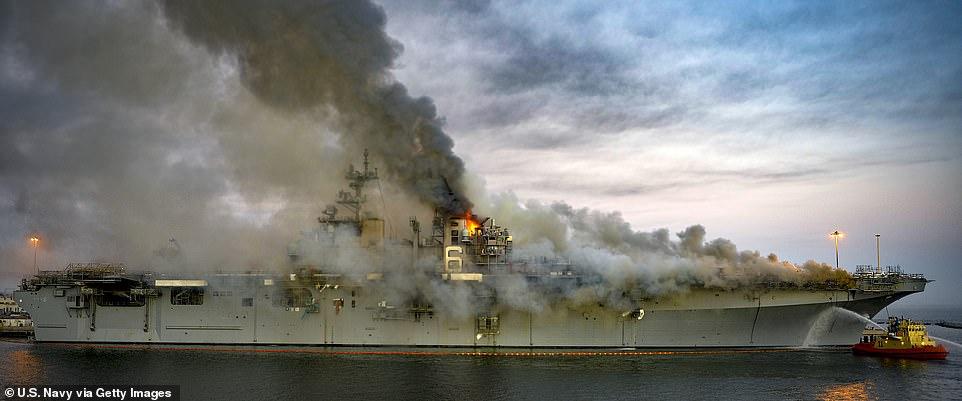
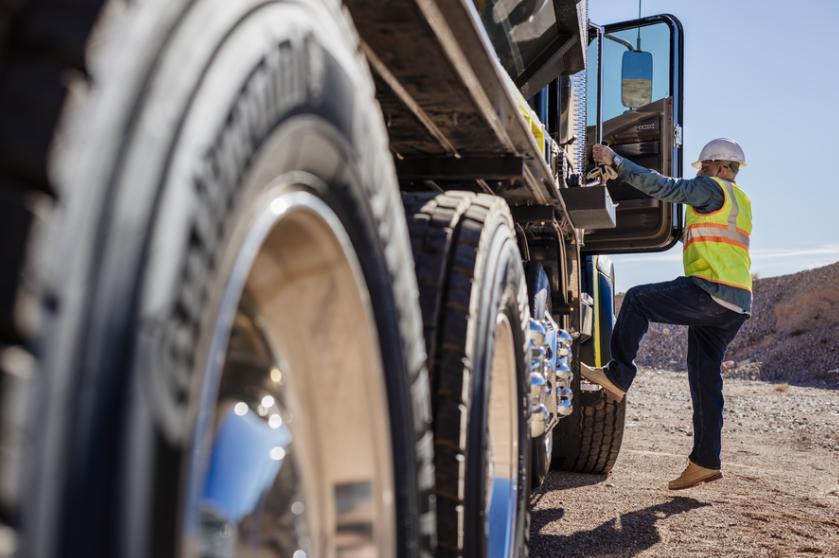

Medium-Duty Sales in June Slide 18.8%
in Trucking News
Posted
Transport Topics / July 15, 2020
U.S. retail sales of Classes 4-7 medium-duty trucks in June dropped 18.8% to just under 18,000 units, WardsAuto.com reported, with long slides down in the two heaviest segments and a small combined step up for the lowest two.
Sales fell to 17,515 compared with 21,574 a year earlier.
Sales for the first six months were down 18.6% to 99,281 compared with 121,991 in the 2019 period.
Class 7 sales were 3,798, down 25.9% compared with 5,123 a year earlier. Freightliner was the sales leader. International was second. They were separated by 479 trucks, and their combined sales accounted for 68.2% of the total sales in Class 7.
Class 6 sales plunged 46.7% to 3,575 compared with 6,711 in the 2019 period. International edged out Freightliner 966-956 for the top spot. Four other brands sold a combined 1,653 trucks in the class.
Classes 4-5 sales inched up 4.1% to 10,142 compared with 9,740 a year earlier.
“Classes 4-5 continue to outperform expectations,” said one analyst. “Our current call is for this segment to drop about 30% [in 2020]. For the larger medium-duty vehicles, we are looking for Classes 6-7 to fall about 35%, with similar expectations for the whole of the Classes 4-7 market.”
He said things are progressing as expected for Classes 6-7.
“This continues to be largely a lease-rental and private-fleet story, with capital budgets being cut, leading to below replacement demand,” he said. “Same for government and municipal markets, whose tax revenues are suffering mightily.”
He added, “Honestly, there is no magic between classes. All of the configurations that go on these chassis are scalable. So a small beverage-delivery truck could be a Class 6, but it could also be a Class 5 or a Class 7.
“Just change the length of the frame rails and either add to or take away from suspension slash weight carrying capacity, and it is what you want it to be. Perhaps Class 6 is a just a good middle ground from which to move up or down.”
In related news, Mack Trucks, a unit of Sweden's Volvo Group, announced serial production of its MD Series of Classes 6-7 trucks was rescheduled to Sept. 1 from July 1. Mack invested $13 million in a new manufacturing facility in Virginia’s Roanoke Valley.
“The start was delayed as a result of the coronavirus pandemic,” a spokesman said.